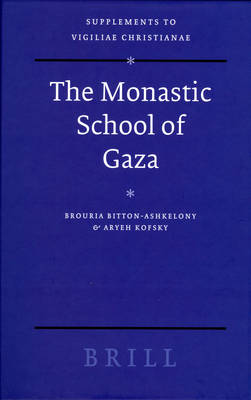
- Afhalen na 1 uur in een winkel met voorraad
- Gratis thuislevering in België vanaf € 30
- Ruim aanbod met 7 miljoen producten
- Afhalen na 1 uur in een winkel met voorraad
- Gratis thuislevering in België vanaf € 30
- Ruim aanbod met 7 miljoen producten
Zoeken
Omschrijving
This book studies one of the most striking chapters in the history of late antique monastic culture, provided by the monastic legacy of Gaza. A monastic intellectual community flourished in the region of Gaza from the fourth to the seventh century, producing a wealth of literary works. In this diverse and exciting literary corpus--especially in the unique correspondence between spiritual leaders and their clientele--matters that are usually only hinted at in monastic sources, are vividly portrayed. Distinct from the dry and matter-of-fact monastic instructions and the stereotypes of hagiography, this corpus exposes the psychological tensions, moods, frustrations, and elations in the daily existence of the monks, revealing them as creatures of flesh and blood. This book seeks to frame the historical development of this community and endeavours to analyze the spiritual and intellectual context of what may be termed the monastic school of Gaza. The legacy of this complex and thriving centre cuts across theological differences and boundaries. Shedding light on these neglected educated circles enhances and somewhat balances the overall historical picture of late antique ascetic culture and Palestinian Christianity.
Specificaties
Betrokkenen
- Auteur(s):
- Uitgeverij:
Inhoud
- Aantal bladzijden:
- 261
- Taal:
- Engels
- Reeks:
- Reeksnummer:
- nr. 78
Eigenschappen
- Productcode (EAN):
- 9789004147379
- Verschijningsdatum:
- 28/02/2006
- Uitvoering:
- Hardcover
- Formaat:
- Genaaid
- Afmetingen:
- 165 mm x 244 mm
- Gewicht:
- 607 g

Alleen bij Standaard Boekhandel
+ 512 punten op je klantenkaart van Standaard Boekhandel
Beoordelingen
We publiceren alleen reviews die voldoen aan de voorwaarden voor reviews. Bekijk onze voorwaarden voor reviews.








